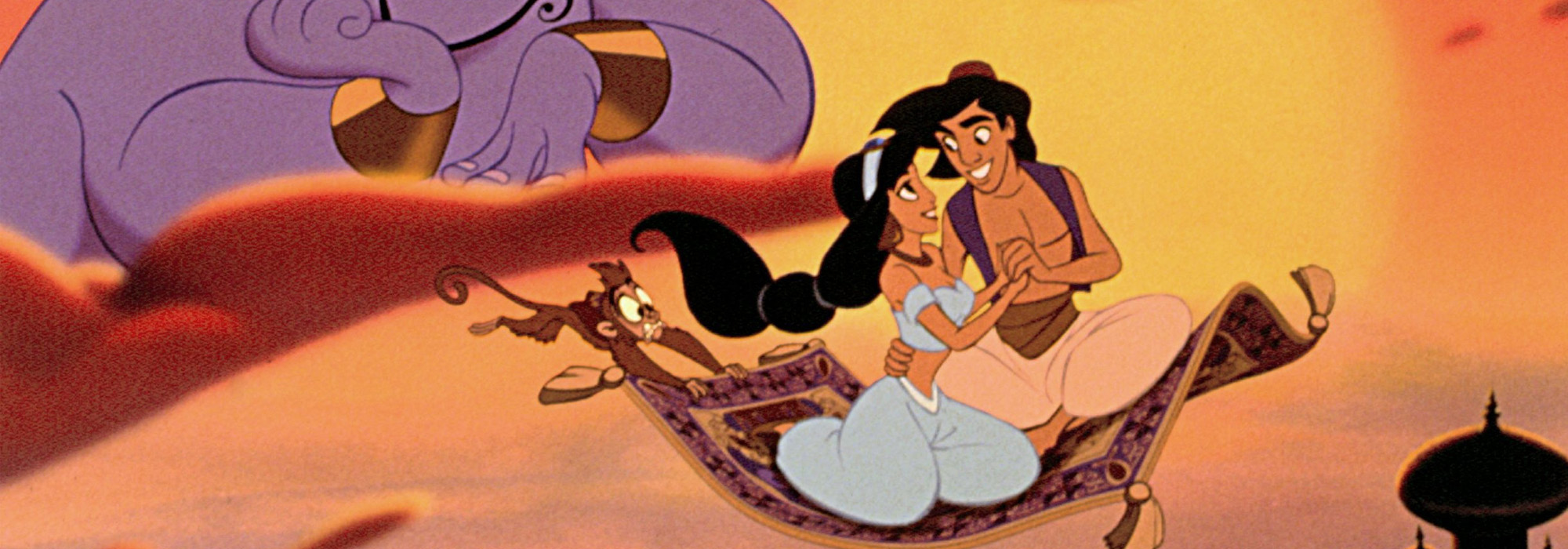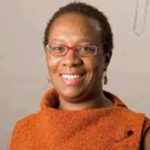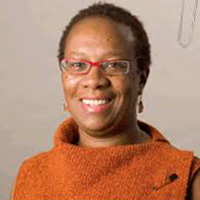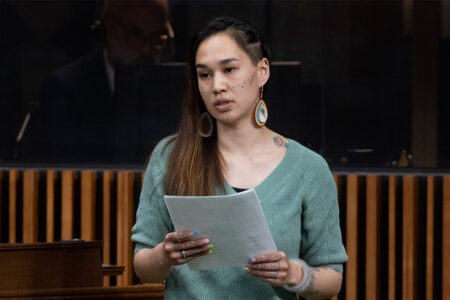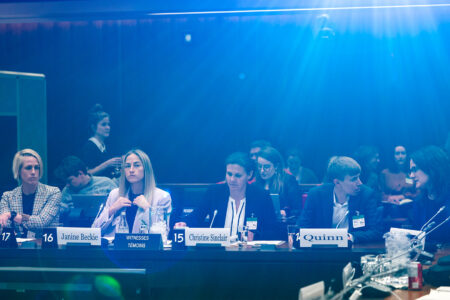
Images of Justin Trudeau captured in brownface in 2001 stream across international media. The outrage takes many forms. For some, his position as leader of our multicultural nation not only requires an apology but also calls into question his fitness for office and the sincerity of his policies. For others, the incident was theatrical expression at best, and poor judgment at worst. But the fundamental question is whether this incident can serve as a catalyst for a more meaningful discussion around cultural borrowing.
How does cultural appropriation fit into a discussion of Shakespeare’s Othello, for example, where operatic and theatrical performances have been in blackface for decades without hampering its status as an iconic work? How do we acknowledge the essence of artistic expression, which can draw inspiration from other cultures, expanding and transforming music, visual art, dance and theatre? When does it become exploitative cultural appropriation, a question that comes up every year at Halloween?
The Arabian Nights theme of the West Point Grey Academy gala, where Trudeau appeared in brownface in 2001, was at its core orientalist. In other words, the theme was based on a Western view that collapses diverse nations into a singular exotic other. An orientalist vision is fundamentally inaccurate, and by extension racist.
The Arabian Nights story underpinning the theme, also known as One Thousand and One Nights, is believed to have derived from folktales from India, Iran, Egypt, Turkey and Greece. An oft repeated version is set in India or China, the names of the chief characters might be Iranian, the majority of the names are Arabic and the underlying frame of the story is likely Indian. The tales themselves reflect a cultural borrowing or intermingling across diverse cultures over centuries. The concern is when these folktales are taken out of their cultural context, and become a stand-in for a true understanding of the Arab/Muslim community. At West Point Grey Academy, the Arabian Nights gala exoticized the culture of diverse peoples of the Middle East and Central Asia, reducing them to a fantasy for the entertainment of those attending.
One of the most widely circulated configurations of the Arabian Nights is set in the context of a woman bargaining for her life using stories to outwit a king. The king in the tale justified the murder of wife after wife because his first wife sexually betrayed him. The underlying message is that Arab masculinity is barbarous and pre-modern. The Islamophobia that has flourished after 9/11 is furthered when constructs of Arab/Muslim cultures are steeped in stereotypes and fantasy.
Other photos published from the West Point 2001 gala suggest women were dressed up as harem dancers. With or without brownface, the fetishization of Arab women as simultaneously veiled and uncovered is a recurring image in Western art and played out every Halloween. The “I Dream of Jeannie” configuration of woman as “mastered” was a popularization of this fantasy. The protected space of the harem for all women within a Muslim household that included wives, mothers, daughters became solely a space of concubinage, reflecting the distorted Western sexualization of women in Muslim/Arab culture.
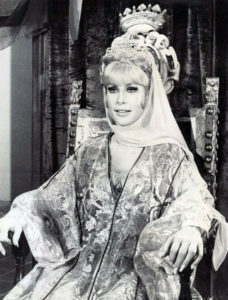
In the 1992 Disney movie Aladdin (a story added to the Arabian Nights by European translators), the original lyrics of the opening montage were: “Oh, I come from a land, from a faraway place … where they cut off your ear when they don’t like your face/ It’s barbaric, but, hey! It’s home.” (This was edited for the home video release to “Oh, I come from a land, from a faraway place … Where it’s flat and immense/And the heat is intense/It’s barbaric, but, hey, it’s home” after an outcry from the American-Arab Anti-Defamation League.)
This very popular Disney movie trafficking in a mix of empowerment and stereotyping was also about money. The 1992 version of Aladdin became the highest grossing film at the time. It made over $500 million worldwide. The total lifetime gross worldwide for Aladdin 2019 is over $1 billion. This does not include the profits made by licensing the characters for toys, costumes and other entertainment products. The success of the films means that the dissemination of the stereotypes outstrips the capacity of Arab/Muslim communities to communicate a more nuanced image of their own cultures to the same Western audience.
What, then, is the significance of dressing young children up as Aladdin and Jasmine for Halloween? What’s important to consider is that both contemporary and historical cultural appropriation is about power. It is the capacity to choose the cultural markers of another, for your own entertainment without consequence.
To merit public vilification, cultural appropriation today has to involve more than just the wearing of cultural symbols or partaking in practices not one’s own. An example of respectful collaboration would be fashion designer Valentino’s consultation with Metis artist Christi Belcourt for his 2016 resort line. What makes the Disney Aladdin example chilling are the following elements: (a) it amplifies the European distortion of the original Arabian Nights and disingenuously advances it to children as insight into Arab/Muslim culture; (b) it does not benefit the source community but rather lines the pockets of those trafficking in racist stereotypes; and (c) its failure to respect and consult with the Arab/Muslim community leads to the widespread communication of a violent racist stereotype.
My skin is not a costume. When you colour your skin to represent another culture, the action moves into the realm of insult and mockery. A bit of effort and inquiry, which West Point Grey Academy did not apply to its gala in 2001, should reveal whether a costume or theme is reflecting a stereotype that is rejected by that community.
We should ask ourselves what is powering the out-of-context construction of the cultural image, symbol or practice? What is being done with the hijacked cultural marker? Is there a profit being built on the foundation of the stereotype? What role does the source community play in the alleged appropriation? Is the appropriation about a fantasy or lack within Western culture that is seemingly fulfilled through the appropriation?
It is also true that not all cultural images or symbols bear the same level of stigma. It is important to determine whether the cultural marker in question has given rise to negative economic or social impacts for the source community in the past. This is particularly important if it is an ongoing reality. Wearing a veil or a modified hijab at Halloween when Muslim women post 9/11 can be subjected to random violence is in the poorest of taste.
And cultural appropriation or awkward borrowing is not strictly a black/brown versus white issue. On September 28, 2019, Cardi B wore a full body-covering floral outfit created by British designer Richard Quinn. The outfit entirely covers her face. This fashion forward outfit at Paris Fashion Week drew attention as she visited the Eiffel Tower.
It has been illegal in France for Muslim women to wear niqabs, burkas or other face coverings in public since 2010. The lack of consequence for Cardi B is very much about the power of celebrity. She did not indicate that she was making a political statement related to the French legislation, though the commentary on her social media feeds indicate that many are aware of the contradiction. Cardi B is praised for her innovative style while her Muslim sisters face the force of the criminal law and are denied their right to cultural and religious expression.
In the end, cultural appropriation is not about the source communities from which the symbols, images or art is drawn. It is a stripping bare of Western fantasies. It is an amalgam of curiosity, ignorance, desire and sometimes greed. I am not calling for censorship but rather an acknowledgement of the mixed nature of creativity, theft, borrowing and power that can be deliberately or unintentionally disrespectful. Acknowledging this is a starting point that will lead to mutual respect between cultural communities nationally and in a global context.
Photo: ALADDIN, Genie, Abu, Princess Jasmine, Aladdin, 1992, (c)Walt Disney Pictures/courtesy Everett Collection
Do you have something to say about the article you just read? Be part of the Policy Options discussion, and send in your own submission. Here is a link on how to do it. | Souhaitez-vous réagir à cet article ? Joignez-vous aux débats d’Options politiques et soumettez-nous votre texte en suivant ces directives.



